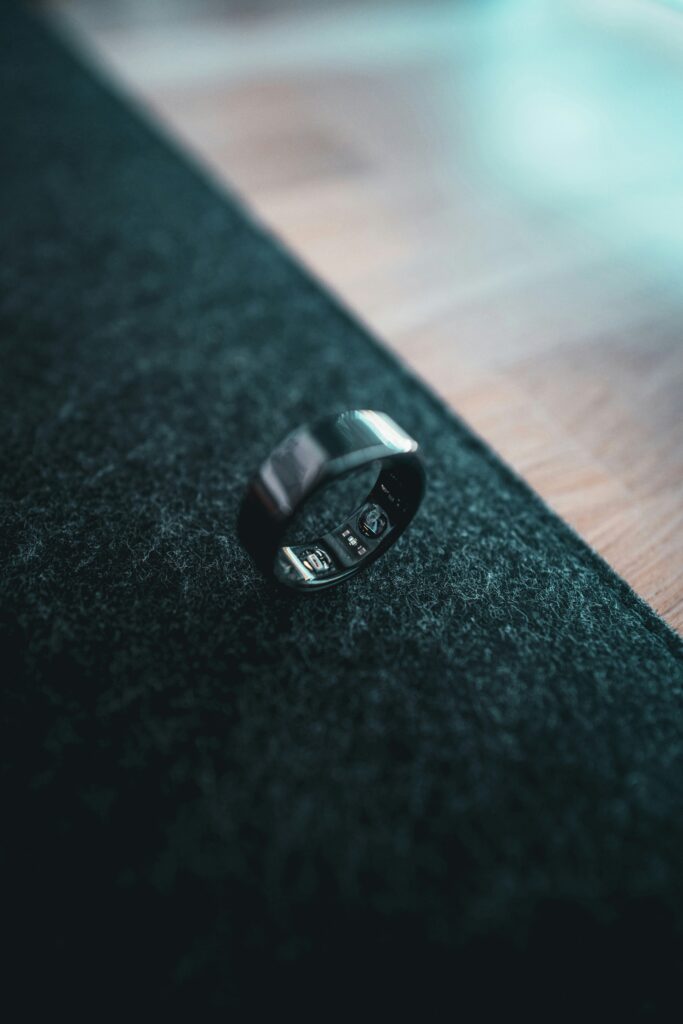Table of Contents
In the realm of self-improvement and personal optimization, wearable technology plays a crucial role. This article dives into the comparison between Garmin vs Oura Ring, highlighting their unique features, applications, and impact on tracking health and fitness.
The Evolution of Wearable Technology
The journey of wearable technology has been nothing short of remarkable. From the early days of basic pedometers to the sophisticated devices we see today, the evolution has transcended mere convenience to embrace comprehensive health monitoring. The late 20th century marked a significant milestone with the introduction of heart rate monitors and rudimentary fitness trackers. These rudimentary devices paved the way for more advanced wearables that integrated additional features such as sleep tracking and calorie counting.
As the technology matured, the 2010s witnessed a boom in functionality with the emergence of smartwatches and fitness-focused gadgets like Garmin’s range of devices and the Oura Ring. Garmin, originally known for global positioning system (GPS) devices, expanded its portfolio to include sophisticated fitness trackers and smartwatches tailored for outdoor adventures and various sports. Meanwhile, the Oura Ring introduced a minimalist yet powerful approach to health tracking, focusing heavily on sleep, readiness, and overall daily activity.

Today, wearables can encompass anything from fitness bands, smartwatches, to smart rings, each designed with unique functionalities. Garmin and Oura Ring occupy distinct niches within this broader context. Garmin caters predominantly to athletes and outdoor enthusiasts, offering GPS capabilities and sport-specific analytics, while Oura Ring emphasizes holistic wellness through its deep insight into sleep and recovery metrics. Together, these devices reflect the shift toward personalized and data-driven health management, empowering users to optimize their physical and mental well-being in ways that resonate with their lifestyles.
Overview of Garmin Devices
Garmin has long established itself as a leader in the world of fitness tracking, offering a diverse range of products that cater specifically to athletes and fitness enthusiasts. At the core of Garmin’s appeal is its robust GPS capabilities, which allow users to track outdoor activities with impressive accuracy. Whether you’re running, cycling, or hiking, Garmin devices provide real-time metrics that are invaluable for serious athletes looking to optimize performance.
The various Garmin models cater to specific sports and personal health metrics. The Forerunner series, for example, is tailored for runners with features like advanced pacing strategies, heart rate monitoring, and personalized training plans. In contrast, the Fenix series targets multi-sport athletes, incorporating features for swimming, skiing, and trail running, alongside navigational tools. Each model is designed with precision and data analytics in mind, offering insights into VO2 max, recovery times, and even training effectiveness to help athletes fine-tune their routines.

Beyond athletic performance, Garmin devices also include wellness tracking functionalities. Features such as stress tracking, body battery levels, and sleep monitoring enrich the user experience by providing holistic data that informs lifestyle choices. Through the Garmin Connect app, users can analyze trends, set health goals, and remain motivated. This combination of detailed analytics and versatility makes Garmin devices an invaluable asset for those committed to self-improvement and personal optimization in their health and fitness journey.
In-Depth Look at the Oura Ring
The Oura Ring represents a unique approach to health tracking that prioritizes wellness over mere physical fitness metrics. Unlike traditional fitness trackers that often emphasize steps and calories burned, the Oura Ring dials into the intricacies of your body’s biometrics, offering a comprehensive view of your overall health. One of its standout features is sleep tracking: it uses advanced sensors to measure sleep quality by analyzing total sleep time, sleep stages, and restfulness. This data is crucial for anyone looking to optimize their performance, as restorative sleep is foundational for recovery.

Additionally, the Oura Ring tracks heart rate variability (HRV), a critical indicator of your body’s stress levels and recovery status. Elevated HRV can suggest strong resilience to stress, while lower levels may indicate fatigue or strain. The ring also evaluates daytime readiness through a combination of factors, including sleep performance and activity levels, thereby providing insights into how well you should handle your day.
When compared to traditional fitness trackers, the Oura Ring stands out for its sleek design, making it more akin to jewelry than a tech gadget. This subtlety means it’s more likely to be worn consistently, which is essential for collecting accurate health data. For users focused on wellness, the Oura Ring serves as an invaluable tool that transcends basic fitness tracking, fostering a deeper understanding of how lifestyle choices impact overall health.
Garmin vs Oura Ring: Choosing the Right Device
When choosing between Garmin and the Oura Ring, it’s crucial to consider your specific health goals, lifestyle, and personal preferences. Garmin excels in catering to athletic individuals with its advanced fitness metrics, GPS capabilities, and comprehensive workout tracking features. If you are someone who engages in a variety of sports or outdoor activities, Garmin’s watches and devices can be particularly beneficial. They offer real-time data on performance, allowing you to push your limits and optimize your training sessions.
On the other hand, the Oura Ring is designed with a more holistic approach, focusing on wellness and recovery rather than just fitness. If your primary goal is to enhance your sleep quality and overall well-being, the Oura Ring might be a better fit. Its emphasis on monitoring heart rate variability and recovery can provide deeper insights for anyone looking to improve their mental resilience or manage stress levels—perfect for individuals leading busy lifestyles or those who prioritize self-care.
For casual users who wish to track day-to-day activities without the overwhelming features of an advanced sport watch, the Oura Ring offers simplicity and elegance. However, if you thrive on detailed metrics and enjoy actively pushing your physical capabilities, Garmin’s devices may align better with your ambitions.
Incorporating both devices into your health regimen is also a viable strategy. Utilizing the tracking prowess of a Garmin alongside the recovery insights from an Oura Ring can create a comprehensive view of your health journey, enabling a balanced approach toward achieving optimal performance and wellness.
Conclusions
Both Garmin and Oura Ring offer unique advantages for health tracking. While Garmin excels in multifunctionality suited for sports enthusiasts, Oura Ring specializes in in-depth sleep and recovery analysis. Choosing between the two depends on individual health goals and lifestyle preferences, empowering users to make informed decisions on their health journey.

Leave a Reply